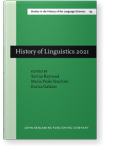Chapter 6
Eléments pour une histoire de l’interprétation
Considérations méthodologiques, enjeux et perspectives
Interpretation gained visibility in the 20th century thanks to two major historic events: the Paris
Peace Conference (1919), in which consecutive interpreters played a crucial role, and the Nuremberg Trials
(1945–1946), in which simultaneous interpretation gained international recognition. These key events helped to give
the profession unprecedented prestige. The emergence of schools for translators and interpreters after World War II
fostered the development of Interpreting Studies along with Translation Studies. Essentially conference interpreting
centered, these studies have unfortunately neglected for a long time other forms of interpreting, wrongly regarded as
lower-ranking forms, although older and more widespread. Today, an increasing number of studies aim to reconstruct the
global history of this millennia-old language practice. Initially West-centered, if not Europe-centered, currently
more and more works go beyond this original framework. The present article examines this epistemological shift in the
historiography of interpreting, the methodological problems it implies, its challenges and perspectives.
Article outline
- 1.Introduction
- 2.D’une historiographie accessoire au renouveau des Interpreting studies
- 3.Une lecture foncièrement occidentocentrique
- 4.Réflexions et itinéraires méthodologiques
- 5.En guise de conclusion
-
Bibliographie
This content is being prepared for publication; it may be subject to changes.
Article language: French
